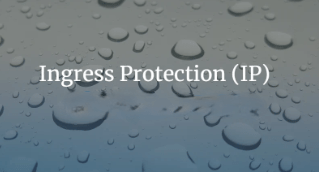Ventilation
What are IP-Rated Protection Vents, and What Are They Used For?
IP-rated protection vents are specialized components used in enclosures to provide both ventilation and protection against environmental elements such as dust, water, and moisture. The term “IP” stands for Ingress Protection, which is a standardized rating system that indicates the level of protection an enclosure or vent offers against solids (like dust) and liquids (like water).
Key Features of IP-Rated Protection Vents:
Pressure Equalization: These vents allow air to flow in and out of the enclosure, equalizing pressure between the inside and outside. This helps prevent damage or distortion to the enclosure due to pressure changes caused by temperature fluctuations or altitude variations.
Moisture and Dust Protection: IP-rated vents block the entry of dust, dirt, water, and other contaminants while allowing air to pass through. This protection is essential for safeguarding sensitive electronics or components from corrosion, short circuits, or other damage.
Condensation Prevention: By allowing moisture vapor to escape from within the enclosure, the vents help prevent the buildup of condensation, which could otherwise lead to electrical failures or mechanical issues.
IP Ratings Explained:
An IP rating typically consists of two digits:
The first digit indicates the level of protection against solids, such as dust (e.g., 6 means “dust-tight”).
The second digit indicates the level of protection against liquids, such as water (e.g., 7 means “protection against immersion in water up to 1 meter for 30 minutes”).
For example, an IP68-rated vent would provide complete protection against dust (6) and allow for immersion in water beyond 1 meter depth (8), making it suitable for harsh environments.
Applications of IP-Rated Protection Vents:
Automotive: Used in headlights, sensors, and electronic control units (ECUs) to prevent water and dust intrusion while managing temperature and pressure changes inside the enclosure.
Consumer Electronics: Found in waterproof smartphones, outdoor cameras, and other portable devices to protect sensitive components while preventing condensation buildup.
Telecommunication Equipment: Installed in outdoor telecom cabinets and antenna systems to manage pressure changes and protect sensitive electronics from environmental contaminants.
Industrial Equipment: Applied in machinery and outdoor installations where harsh environmental conditions, such as dust and water exposure, are common.
Medical Devices: Used in equipment that requires both protection from fluids and ventilation for heat or pressure control, such as monitoring systems and ventilators.
Benefits:
- Prolongs the life of equipment by preventing damage from environmental exposure.
- Improves reliability by preventing pressure buildup or condensation that could lead to malfunction.
- Enhances durability, particularly in outdoor or rugged environments where exposure to water or dust is inevitable.
In short, IP-rated protection vents are crucial for devices and equipment that need to operate reliably in challenging conditions, offering a balance of protection and ventilation to enhance longevity and performance.


